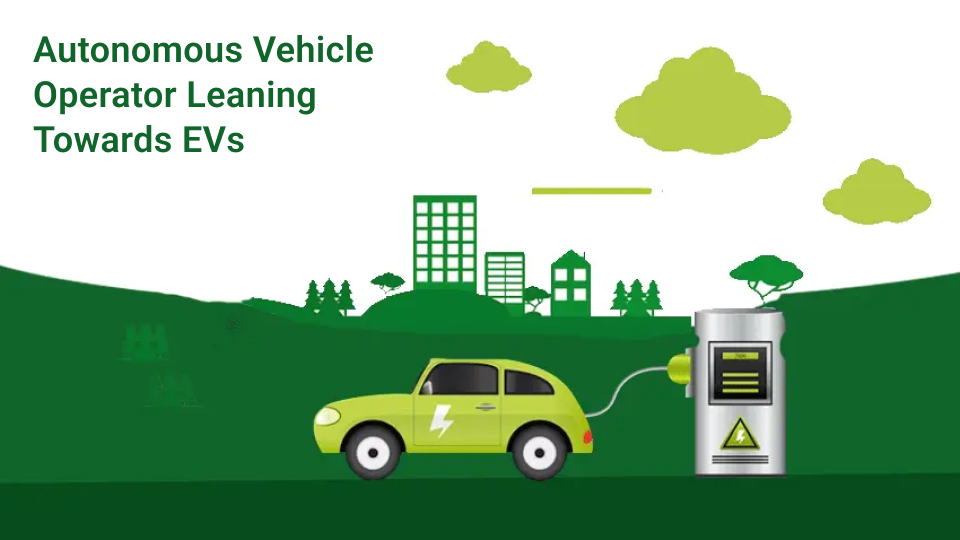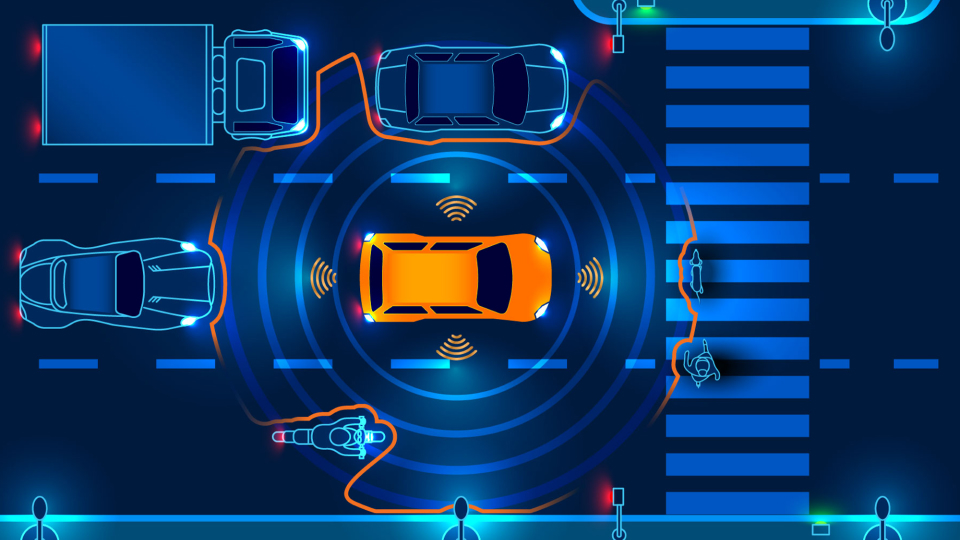
Why Should An Autonomous Vehicle Operator Embrace Electric Vehicles?
An autonomous vehicle operator always needs to keep an eye on the latest tech developments. The automotive industry has witnessed a remarkable transformation in recent years with the emergence of electric vehicles (EVs) and autonomous vehicles (AVs). Autonomous and electric vehicles have the potential to revolutionize the way we commute and reshape the transportation landscape. While EVs are heralded as a cleaner and more sustainable alternative to traditional internal combustion engine vehicles, AVs promise a future of enhanced safety, convenience, and efficiency. When combined, the convergence of electric and autonomous technologies has the potential to bring about a genuinely transformative transportation ecosystem.
Statistics further highlight the growing significance of electric vehicles within the autonomous vehicle industry. According to the International Energy Agency (IEA), global sales of electric vehicles surpassed the 5 million mark in 2018, a substantial increase from just over 200,000 in 2013. Furthermore, Bloomberg New Energy Finance predicts that by 2040, electric vehicles will make up more than half of all new car sales worldwide, totaling 60% of passenger car sales and 33% of the global fleet.
Reasons behind the emergence of EVs
Several factors are working behind the surge in EV adoption, such as:
1. Governments worldwide are implementing stricter emission regulations and providing incentives to promote the adoption of electric vehicles. These measures aim to reduce greenhouse gas emissions and combat climate change.
2. Advancements in battery technology have led to improved EV range and charging infrastructure, alleviating concerns regarding range anxiety and making EVs a viable option for long-distance travel.
3.The declining cost of lithium-ion batteries has significantly narrowed the price gap between EVs and conventional vehicles and make them more accessible to a broader range of consumers.
4.In the autonomous vehicle arena, electric vehicles have gained traction due to their inherent advantages in terms of efficiency and maintenance. Electric drivetrains offer higher energy efficiency than internal combustion engines, enabling AVs to travel longer distances on a single charge. Moreover, electric vehicles have fewer moving parts, resulting in lower maintenance and servicing costs.
These factors make EVs ideal for autonomous vehicle companies seeking cost-effective and sustainable transportation solutions. As the electric vehicle market continues to grow, it is expected to impact the development and deployment of electric and autonomous vehicles profoundly.
Manufacturers and technology companies increasingly focus on integrating electric drivetrains with autonomous systems to create electric, self-driving vehicles that provide a seamless and sustainable mobility experience. The convergence of electric and autonomous technologies holds tremendous promise for a cleaner, safer, and more efficient transportation future.
Advanced features of electric autonomous vehicles
Listed below are a few vital features of electric vehicles important for the autonomous vehicle industry:
A. Range and battery capacity
Electric vehicles used in autonomous fleets should have an acceptable range and battery capacity to meet the demands of long-distance travel without frequent recharging. A longer range ensures that autonomous vehicles can operate for extended periods before needing to recharge, enhancing their overall efficiency and productivity.
B. Charging infrastructure compatibility
Electric vehicles utilized in the autonomous industry should be compatible with the existing and emerging charging infrastructure. The availability of reliable and convenient charging stations is crucial for autonomous vehicles to recharge their batteries efficiently. These charging stations minimize downtime and maximize operational readiness.
C. Energy efficiency
Electric vehicles with high energy efficiency are desirable for autonomous fleets as they can cover more distance on a single charge, reducing the need for frequent recharging and increasing overall operational efficiency. Efficient electric drivetrains help optimize energy usage and extend the vehicle’s range.
D. Vehicle-to-Grid (V2G) integration
V2G integration enables bidirectional energy flow between electric vehicles and the power grid. This feature allows autonomous electric vehicles to consume energy and supply excess energy back to the grid when needed. V2G integration can contribute to grid stability and energy balancing and provide additional revenue streams for fleet operators.
E. Rapid charging capability
Rapid charging technology allows electric vehicles to charge at higher power levels, significantly reducing the time required for recharging. In the context of autonomous fleets, rapid charging capability becomes crucial to minimize downtime and maximize vehicle availability, ensuring efficient and continuous operation.
F. Vehicle-to-Vehicle (V2V) communication
Electric vehicles equipped with V2V communication capabilities can exchange critical information with other vehicles on the road. This feature enhances the safety and efficiency of autonomous fleets by enabling real-time communication, such as sharing sensor data, traffic conditions, and potential hazards, improving overall situational awareness and decision-making.
G. Vehicle-to-infrastructure (V2I) communication
V2I communication enables electric vehicles to communicate with roadside infrastructure, such as traffic signals, road sensors, and smart infrastructure systems. This feature allows autonomous vehicles to receive relevant information about traffic patterns, road conditions, and other essential data, optimizing their navigation and enhancing safety. An electric vehicle tracking application can help you leverage maximum benefits out of this feature.
H. Remote monitoring and diagnostics
Electric vehicles in the autonomous industry should have robust remote monitoring and diagnostics capabilities. It enables fleet operators to remotely monitor the vehicle’s performance, battery status, and other vital parameters. Also, an EV fleet management software ensures proactive maintenance, troubleshooting, and minimizing downtime.
I. Vehicle security
Autonomous electric vehicles require robust security features to protect them from potential cyber threats. Implementing secure communication protocols, encryption, intrusion detection systems, and regular software updates are crucial to safeguard the vehicle’s systems and data integrity.
J. Scalability and upgradability
Electric vehicles designed for the autonomous industry should offer scalability and upgradability features to accommodate evolving technology and operational requirements. It allows for integrating new sensors, software updates, and hardware enhancements to adapt to changing industry standards and future advancements in autonomous technology. An autonomous vehicle operator can use this feature scale as well as upgrade his business.
These vital features of autonomous transit vehicles play a significant role in ensuring the successful integration of electric and autonomous technologies. It enables safe, efficient, and reliable autonomous transportation systems.
Every autonomous vehicle operator should switch to electric vehicles
The emergence of electric vehicles in the autonomous vehicle industry shows a significant milestone in transportation transformation. Moreover, the statistics demonstrate the rapid growth of EVs and their projected importance in the growth of an autonomous vehicle operator. Autonomous vehicles and public transport have become complementary to each other.
Governments, consumers, and industry players rally behind electric and autonomous technologies. Therefore, we can anticipate a future where sustainable, self-driving electric vehicles become the new norm,. They are reshaping our cities and revolutionizing how we travel.








